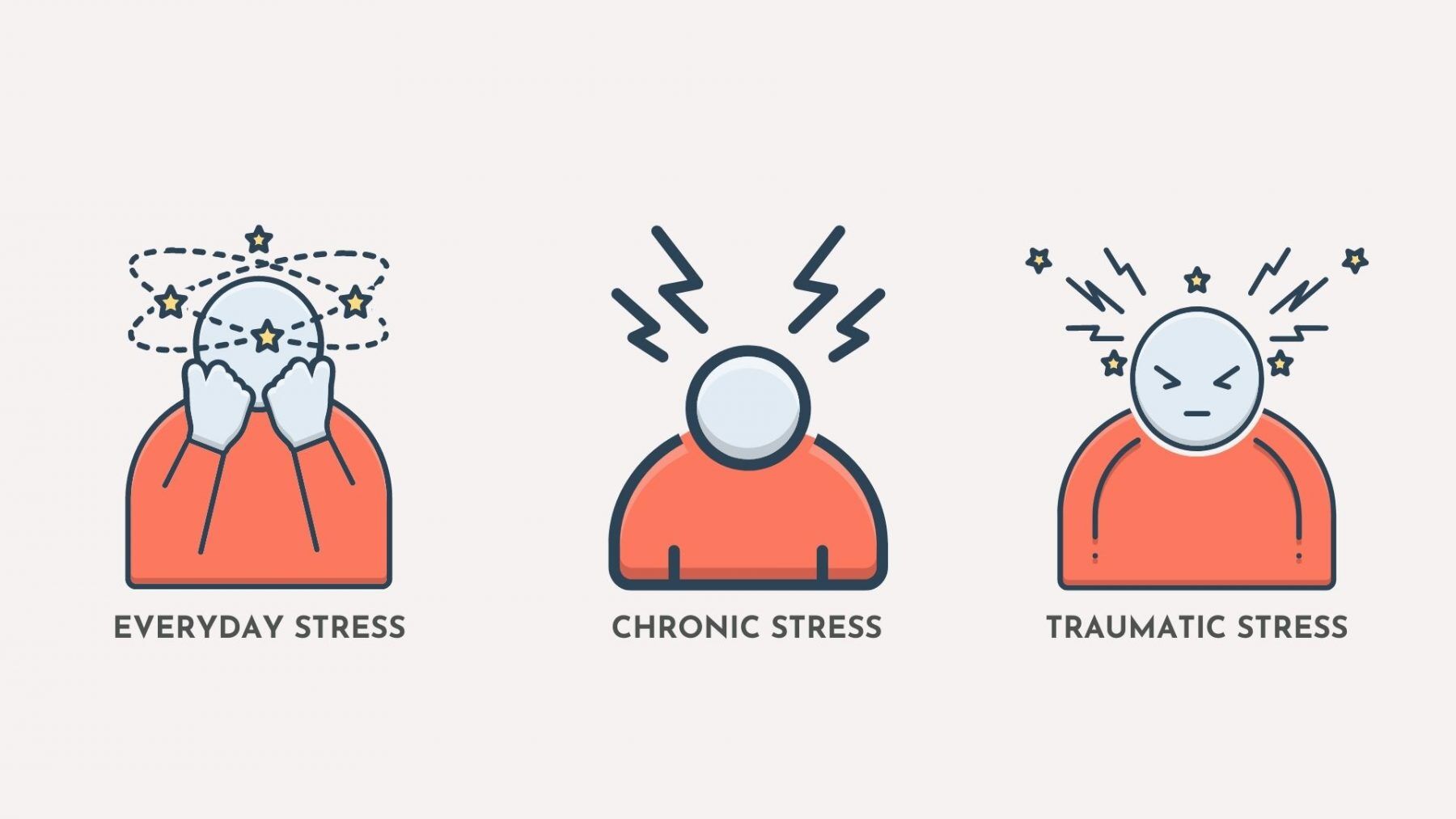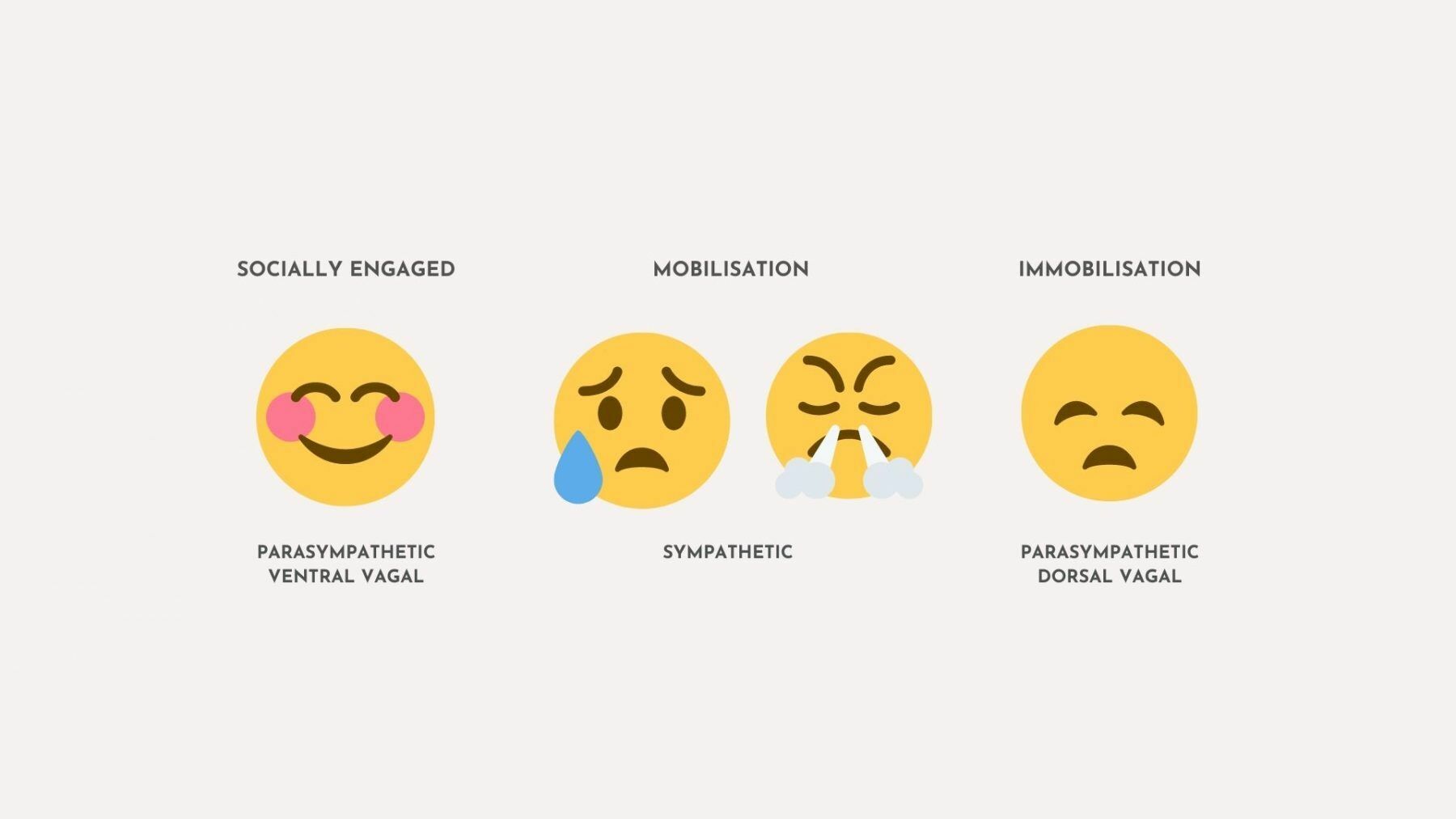Follow Up: Yoga Webinar on Nervous System
In our webinar on the topic of Resilience, I shared about how important it is to understand the meaning of co-regulation and nervous system management. How does one cultivate a more empowered relationship with our body through simple stress management and Neuro regulation practices. I also introduced the science of Polyvagal theory, the importance of social connection and engagement, particularly its role in regulating stress, anxiety and overwhelm in our every day lives.
Different Types of Stress We Face in Our Life
As we know, adversity and hardship do not discriminate. In fact, there are so many stressors in life that can make it living so overwhelming. This can be ongoing life stress such as work, relationship dynamics, bad traffic, technology, COVID-19 adaptations or regulations (think mask wearing, safe entry check-ins long queues, social distancing, temperature taking and what have yous). These are all ways in which we may face everyday stress. To add to that, some of us may also experience chronic stress which can be caused by medical challenges, financial issues, extreme relationship dynamics etc. These are basically ongoing patterns or problems that do not have quick resolutions; they can’t be written away in a matter of days! Finally we have traumatic stress, which is really the most severe form of stress there is. It is through an exposure to traumatic experiences such as accidents, abuse, violence and this may also include childhood or in-utero stress too.
How Resources Play a Big Role in Building a Robust Nervous System
What this means is that our nervous systems is always undergoing some sort of strain or stress and is needing consistent help and resource to regulate and bring us back to health. One of things is that I’ve noticed with some of family, friends or even my clients is that even though most of us can get by “managing” stress, a lot of us don’t really understand what true regulation looks like. While it seems most obvious that with cases of traumatic stress, we need to seek external intervention methods to help us regulate but when people undergo everyday stress or even chronic stress, we don’t always seek help quite so readily. In fact, a lot of us tend to self-medicate or fix it in ways that aren’t really true or promoting healthy regulation. Alcohol, binge watching, extreme exercising – all of these activities can be perceived as coping mechanisms and can bring about some form of relief to a difficult situation but ultimately this is a form of negative resourcing. Negative resources don’t help in building a robust nervous system, like a building with weak foundations, its ready to crumble at the next hint of trouble.
Education and Positive Resources are Crucial
Unfortunately, a lot of this is because of our social and cultural values that don’t really teach us to slow down and pay attention to what’s happening inside our bodies. What tends to happen is that we end up bucking up to life’s demands, we push through and function over or on top of the stress. Or we numb ourselves and check out. Sadly, this is a reality for many when we succumb to a society the praises progress and efficiency over rest, reflection and regulation. Perhaps the only way to overcome all of this is through better education and an amplification of positive resources. This is why I enjoy the work I do. I thrive in teaching people all about the nervous system and how to expand our dialogue about stress and pain in order to find a sweet spot of regulation.
Nervous System, What The Traditional Model Teaches Us
Before we go deeper, let’s take a moment to think about what a regulated nervous system looks like? Do you think you have a regulated nervous system? How are you in term of stress management? As a disclaimer, this is certainly not something that can be learned or consumed in a week or even a month. Resilience building and nervous system regulation takes a really long time. It also requires a willingness to do the work, and often that work is neither easy nor enjoyable.
In the previous webinar to this, I talked a little bit about our autonomic nervous system (ANS) and how it is classically divided into your sympathetic and parasympathetic branch. You can read the summary here. Our sympathetic nervous system is concerned with mobilisation and excitation which is what actually helps us up get up and about, do work and be productive as well as help us react to danger, activating us into fight or flight. While the parasympathetic nervous system is more concerned with rest, recuperation and regeneration. This was what the traditional model of our ANS looked like, we were essentially living within this binary of STRESS and RELAXATION. However, somewhere along the way comes Polyvagal theory and that’s when life gets more interesting! This entire theory helps to redefine what it means to be human!
Polyvagal Theory and The Power of The Vagus Nerve
I’m sure by now you guys would have heard about the vagus nerve. As always, if you’re interested to know more, I definitely recommend purchasing my Biomechanics of Breath Course and deep diving into the power of breathing, nervous system regulation and innate intelligence in our body with me. For the sake of this article, let’s make it simple. The vagus nerve is the tenth cranial nerve and the longest one in our entire body. It is named vagus because it “wanders” like a vagabond! It works by sending out sensory messages from our brainstem to our visceral organs. Interestingly, there is one on the right and the left side of the neck. It innervates all the organs in the chest cavity and abdomen which include the heart, the lungs liver, stomach, spleen, basically everything!
It also has projections into our brain and therefore has a say in everything happening in our body. In fact, there is a lot of research today that when we start looking into the neurology of diseases and ailments, there’s almost always some kind of relationship with our vagus nerve! Just imagine that!
Within this entire polyvagal theory, there are 3 kinds of neural circuits that are responsible for the overall regulation or function of the entire human system. The first is mobilisation, which is sympathetic nervous system. Bear in mind that it’s not part of the vagus nerve but an entire other branch of the nervous system. The second circuit is called immobilisation which is part of our parasympathetic that governs our rest and digest as well as our freeze response. It is part of the dorsal branch. Dorsal meaning “back of” because it is part of the vagus nerve comes through the back of our brain stem. We need this system for survival. When we are faced with extreme threat or when someone is in shock they go into that state of shock response, where their heart rate goes down, oxygen levels drop. Ultimately, it’s a way of the body trying to protect and preserve life. The other response is rest and digest. This is why we get sleepy after we eat, how our gut repairs or how the body regenerates and recovers in time. Finally the third circuit, which is quintessentially Polyvagal Theory, is also part of the parasympathetic nervous system but it governs the social engagement or social connection aspect of our human experience. This is another part of the vagus nerve that is called the ventral vagal branch. Ventral is the opposite of dorsal so it’s in runs down the front of the brain stem. This is one of the most crucial concept in polyvagal theory. It is what sets us apart from other animals. This need central to all mammals; to connect and socially engage through conversation, touch and intimacy.
The Ventral Vagal Develops After Birth
From the moment when we are born, we have no skills to connect and self-soothe. We were never born with this ventral vagal system. It was something that gets later developed and encouraged upon use. They say that the ventral vagus nerve is not myelinated. Which is basically a process in which there is an increase in the fatty sheath surrounding the neuron and its fibres that help to increase the efficiency of the electrical transmission or the signal getting sent through the body. So Myelination of nerves helps nerves go fast and smooth! And when we are born, that nerve needs to be cultivated, or polished. This myelination or polishing only happens through good attunement and attachment. Our mothers or caregivers are the ones who are responsible for teaching us how to self soothe. The rocking, cooing, touch and eye connection are ways in which we help spark that ventral vagal branch in babies. Through that we can connect directly their hearts, establishing safety, lowering heart rates and therefore regulate their nervous system.
Good Regulation and Connection Can Prevent PTSD
We want that good connection. Even as adults. There is so much research showing how when accidents happen and we allow people to feel safe and help them regulate, PTSD is less likely to occur. Social engagement and connection is what helps us regulate, helps us bounce back from distress and adversity. It is what allows us to be in ebb and flow of life without falling into disregulation or chaos.
Unfortunately, not all babies are born into caregivers that have regulated nervous systems. If caregivers cannot offer a safe space or a model of regulation, especially in the first 3 years of the child’s life, it can really set up how the child models their own ANS insofar as it is not going to work as well as it could. There is a likelihood that the child ends up having similar and disregulated systems.
Now in this age of pandemic, the wearing of masks, the social distancing and isolation inevitably has put a lot of strain on our nervous system and affecting our ability to regulate. Remember what actually activates our ventral vagal branch of the parasympathetic is all the things we have been taking out. The facial recognition, physical presence and eye contact. All our intimate heart felt conversations, actual physical touch – all the things that make up our wonderful human experience has essentially been taken out. How can we self-soothe and regulate and return to our baselines in light of all this?
Thank God Our Brains Are Plastic!
Thankfully, we are all pretty resilient beings and if we’ve come this far and survived, we all deserve a good pat on the back. This is primarily due to power of neuroplasticity. This is the idea that the brain is always growing and making new connections. So when we do something often and consistently, we get better at it and we can also change it. We can think of this as neuroplastic healing in which we can rewire our ENTIRE SYSTEM. Our muscle tissue can regenerate, our bones can heal, gut lining can grow, and most importantly our autonomic nervous system can move through this ebb and flow too. We can come back to baseline even in times of stress and threat. One of the things that we cannot leave out of this regulation is this ventral vagus aspect of human connection or engagement. And now more than ever, we need to do more. How can we use whatever that is available to us to soothe, engage and communicate in a real and authentic way? How can move out of shallow conversations and encourage healthy regulated nervous systems to respond to one another? How can we use this innate physiological response of our nervous system to be empathetic, to connect, share and relate to one another so that we can all calm down and be healthy? We may not have good childhood experiences and we may not have a myelinated vagus nerves, and we may not have chosen how 2020 has turned out so far, but we can change the way we regulate our nervous system and orientate back to health.
10 Practical Ways to Spark Up Your Vagus Nerve
At the end of the webinar, I also shared some practical ways in which we can all be mindful and stimulate the vagus nerve:
1. Long Deep Intention Breathing (For more, check out: Biomechanics of Breath)
2. Mindfulness Tehcniques and Neurosensory exercises, (Also check out: Biomechanics of Breath)
3. Laughing, being silly and engaging in play
4. Listen to your biorhythms
5. Mono-tasking, doing one thing at a time
6. All kinds of social engagement such as hugging!
7. Take care of your body
8. Getting upside down
9. Taking Cold Showers
10. Orienting to the present moment
I feel the need to add another disclaimer – none of these techniques will solve your problem. But it can definitely help you to calm down, relax and gain clarity for you to eventually solve your problems. Try to use these techniques as a way to understand what is going on deep within your body and system as opposed to distract yourself from the problem or hard emotions. Be mindful that you’re not forcing yourself to change or control these emotions. Instead, I’d like to invite you to look at the function behind these emotions. What are these emotions trying to tell you and can you begin to meet those needs in order to manage your stress levels and slowly build up the resilience to whatever life throws at you. I hope you guys had fun reading this summary and if you have more questions, feel free to connect with me. If you like geeking out as much as I do, join me on Biomechanics of Breath, available for purchase via our Online Academy.
About the Author
Kathy is a founder and co-director of Urban Yogis. Her training background includes Thai Massage, Reiki, STOTT Pilates, Structural Integration by Anatomy Trains, and she is now in the midst of completing her Biodynamic Craniosacral Therapy Practitioner Training with Body Intelligence. To learn more about Kathy, visit our About page.




